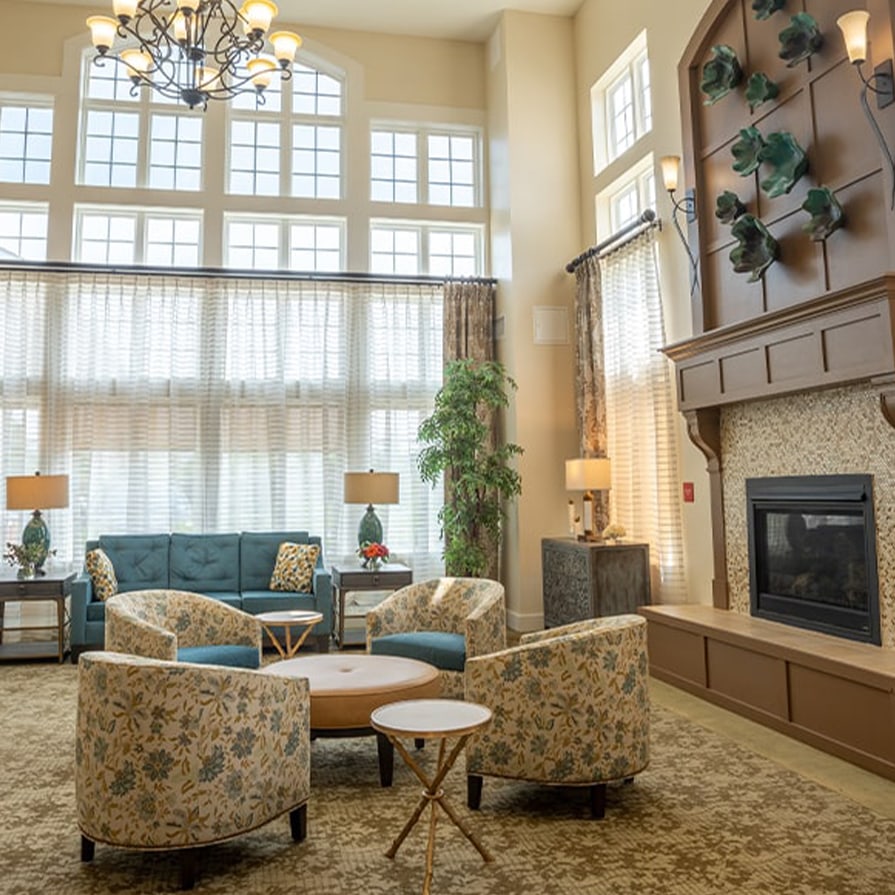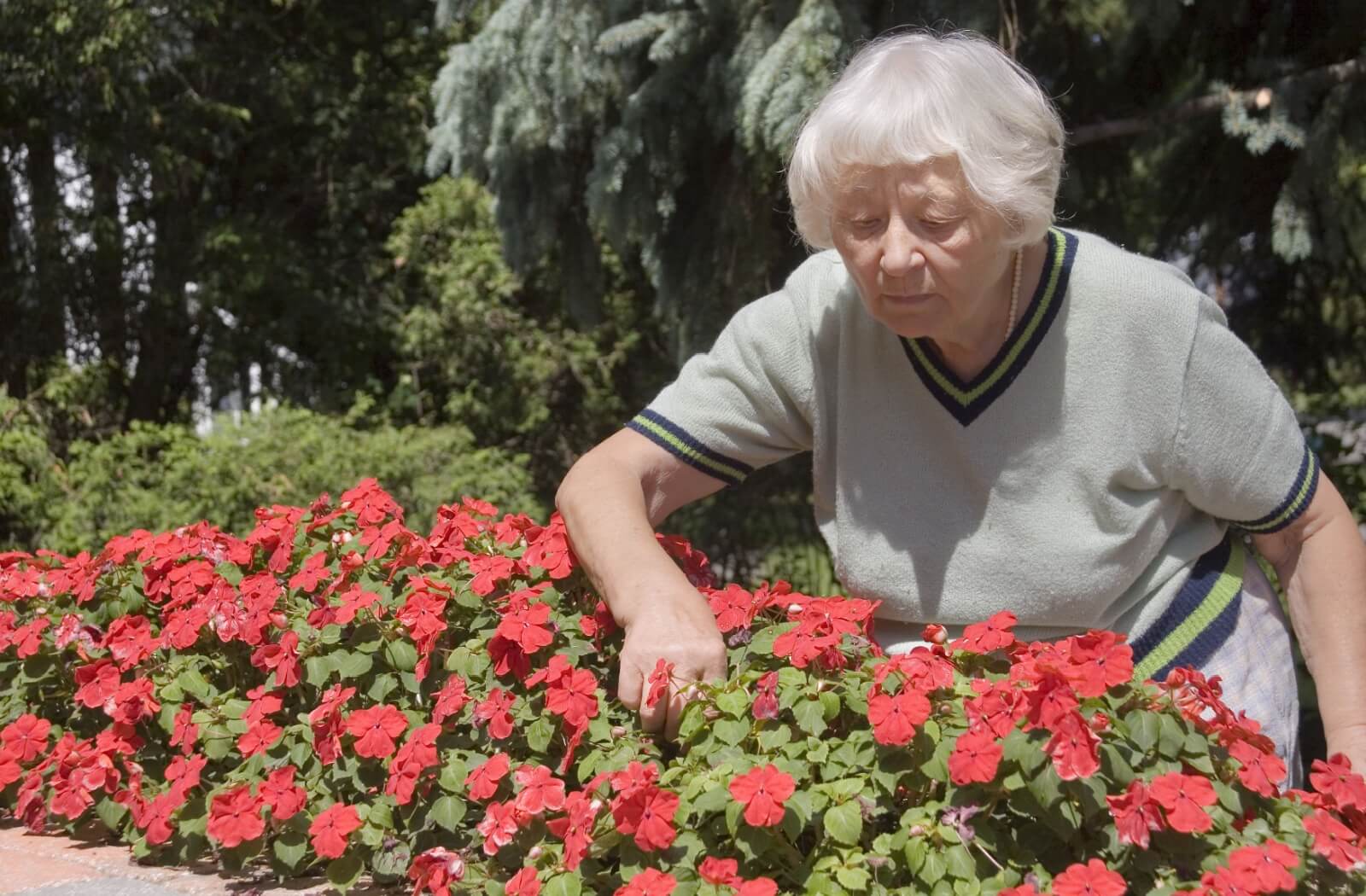Independent living is about balancing self-sufficiency with the convenience of added services. Older adults in these settings have their own private apartments, where they’re free to manage their daily routines independently.
Residents of these types of communities cook, clean, and live life on their terms, but what sets this lifestyle apart is the access to a range of services such as housekeeping, meal provision, transportation, and various social events and programs.
Healthcare professionals are always available should residents require assistance as well. Independent living is enjoying the best of both worlds–maintaining independence while knowing that support is there if needed.
What Is Independent Living like in an Older Adult Community?
Independent living communities are akin to specialized neighborhoods designed for older adults. As mentioned, residents in these communities have their own private residences, such as apartments or houses. This allows them the autonomy to manage their daily routines independently, including meal preparation, housekeeping, and personal scheduling.
Amenities
These communities aren’t just about managing daily tasks. They also offer numerous amenities aimed at enhancing lifestyle quality. These can include communal dining facilities, fitness centers, organized social programs, and recreational opportunities, all designed to foster social interaction and engagement.
Medical Care
Typically, independent living communities don’t provide regular medical care or personal assistance. This is because residents are anticipated to be in reasonably good health and do not require assistance with daily activities, such as bathing, dressing, or medication management. However, those services are never too far away and always accessible.
Flexibility
One of the significant advantages of independent living communities is the flexibility they provide. They allow older adults to maintain their independence, enabling them to continue pursuing their hobbies, interests, and personal endeavors at their discretion.
Why Independent Living Is Beneficial for Older Adults
Independent living communities are a fantastic choice for active older adults. These communities can take a load off their resident’s shoulders when it comes to daily chores, giving them back precious time.
More Time to Enjoy Life
Living in such a community means you can say goodbye to the day-to-day general maintenance of life and spend more time relishing retirement. Individuals will also find beautiful spaces, fitness classes, and a bunch of new friends who are in the same age group. Plus, there’s no need to stress about the responsibilities of home ownership.
Social Community
One of the best parts is the opportunity to connect with friendly neighbors. It’s an effective way to ward off feelings of loneliness and isolation, which increases health and quality of life.
Independent living communities offer residents the ability to live life on their own terms, stay active, and engage in daily activities.
Choosing an Independent Living Community
When considering an independent living community, it’s important to find what suits your loved one best. It’s crucial to determine what they need presently and what they may require in the future.
Here are several factors to consider when exploring potential independent living communities:
The People
The atmosphere of any independent living community is largely determined by its residents. Feeling comfortable and at home in the community is important. Therefore, take the opportunity to converse with some of the residents during a tour of the communities. Do they seem like people your loved one would enjoy spending time with? How about the staff–do they appear friendly and attentive? If there’s a community restaurant, consider having a meal there and interacting with the locals.
Size & Location
Independent living communities vary greatly in size. Whether an individual prefers a small, intimate setting or a larger environment with numerous social opportunities is entirely up to them. Are they comfortable with apartment-style living or more inclined towards a standalone house?
Location is another significant consideration. Many individuals are attracted to popular retirement states such as Arizona, California, and Florida due to their warm climates. However, relocating a considerable distance from their current home entails establishing a new support network and identifying new healthcare providers.
Accessibility
Investigate how easy it is to navigate within and around the community. Do your loved ones feel secure moving about at various times throughout the day? Are local programs conveniently located, or will they require a vehicle? Are places they frequently visit, such as the library, college, or doctor’s office, nearby?
Additionally, examine the layout of the potential housing unit. Are there any stairs that could pose challenges in the future? If necessary, can ramps be installed? Also, check if safety features like grab bars can be fitted in the bathrooms. And if they have a pet, it is important to make sure that the community is pet-friendly.
Programs & Services
Does the community cater to your favorite pastimes? Are services like a gym, game room, or coffee shop available on-site?
There may also be opportunities to pursue new hobbies. Some communities collaborate with nearby universities to provide academic classes and cultural events, which could prove to be quite stimulating.
Cost of Independent Living
The cost can change quite a bit from one community to the next. In independent living communities, residents usually either rent or buy their homes, and there’s typically a monthly fee on top of that. This is kind of like an HOA fee, and it covers some maintenance and services.
It’s important to note if there’s an “entrance fee” to hold a spot for a future resident and make sure that there’s access to medical care.
Does Insurance Cover the Cost of Independent Living?
Does insurance cover independent living? Medicare doesn’t cover these costs. However, older adults might be able to use long-term care insurance to help out financially.
It’s important to keep in mind that premiums for this insurance can change based on how many people are covered and their age.
When thinking about independent living options, it can help to make a list of the most important services for you or your loved one. Take the time to visit the communities and try out the programs and services. The community should promote a healthy lifestyle with options for assistance and care based on your or your loved one’s needs. It should also be safe and offer fun activities to give both the older person and their family peace of mind.
Embracing Independent Living
Independent living is an essential service for many families as their loved ones grow older. Juniper helps residents live their lives to the fullest—that’s why we provide many opportunities for social engagement, peace, activity, and more!
When finding an independent living community that works for your loved one, it’s important to consider the people, the people, the cost, the programs and services, the location, and most importantly, the level of care provided and accessibility to future care.We encourage you and your loved ones to take a tour of our communities to learn more about how we can support you.







